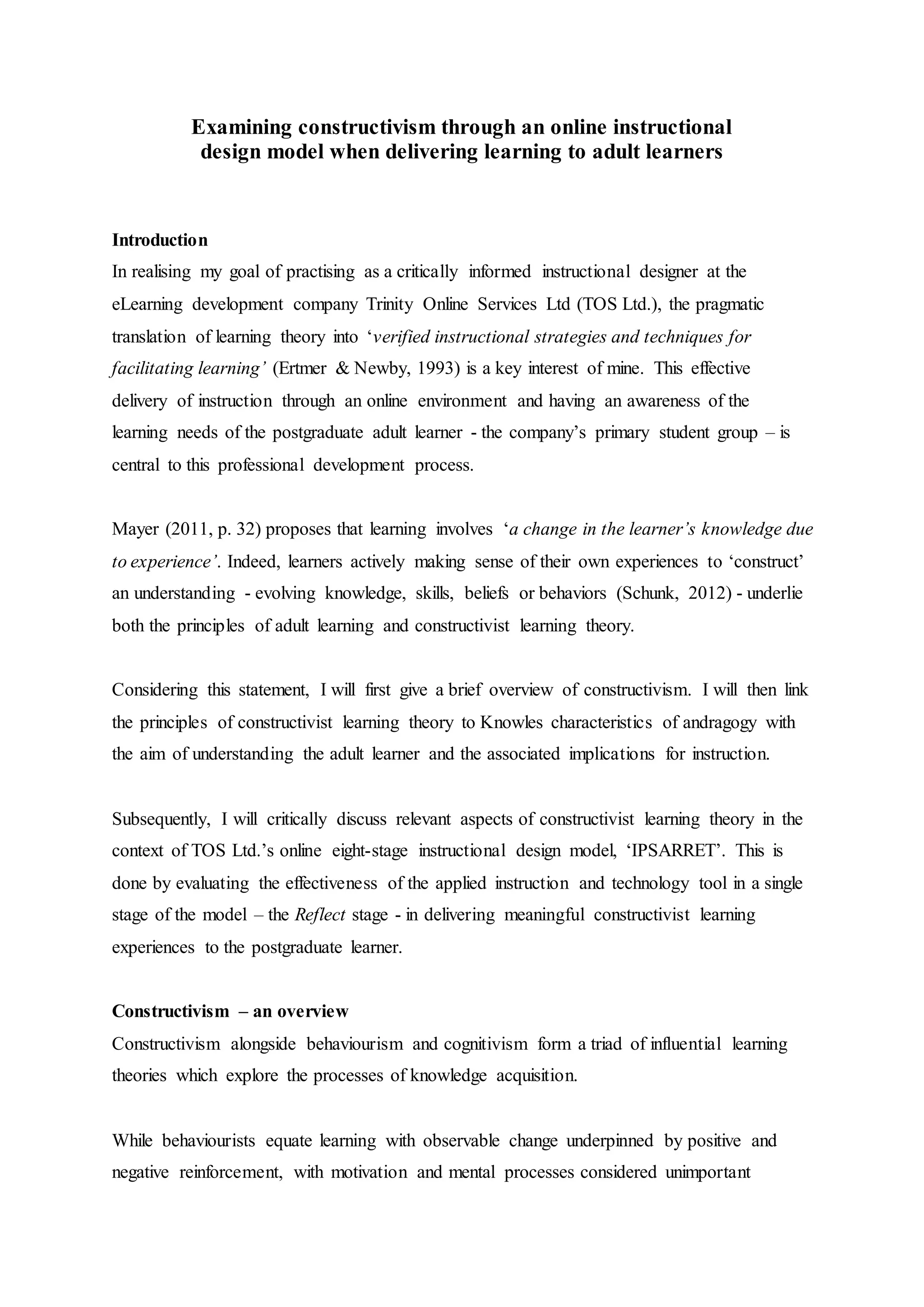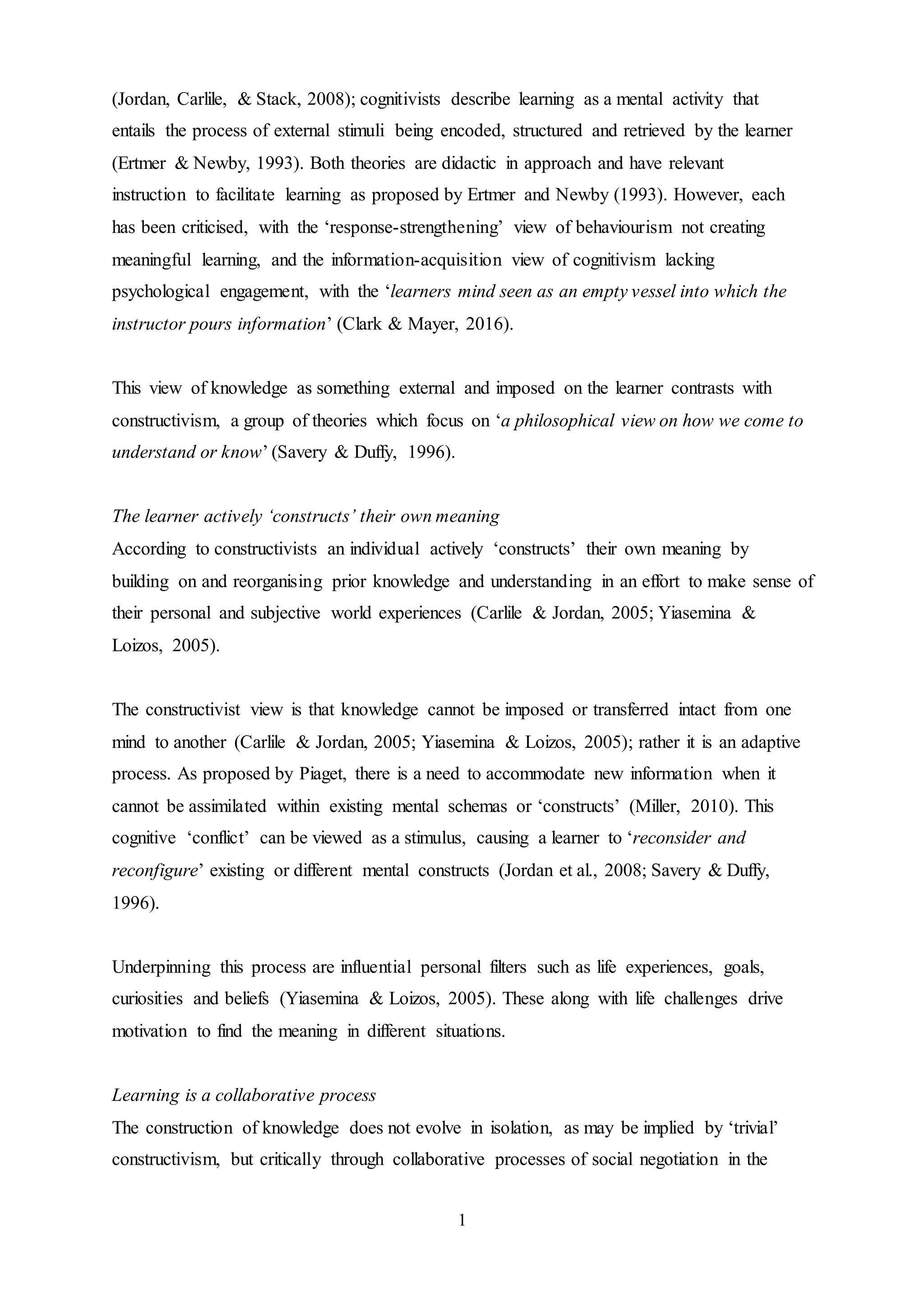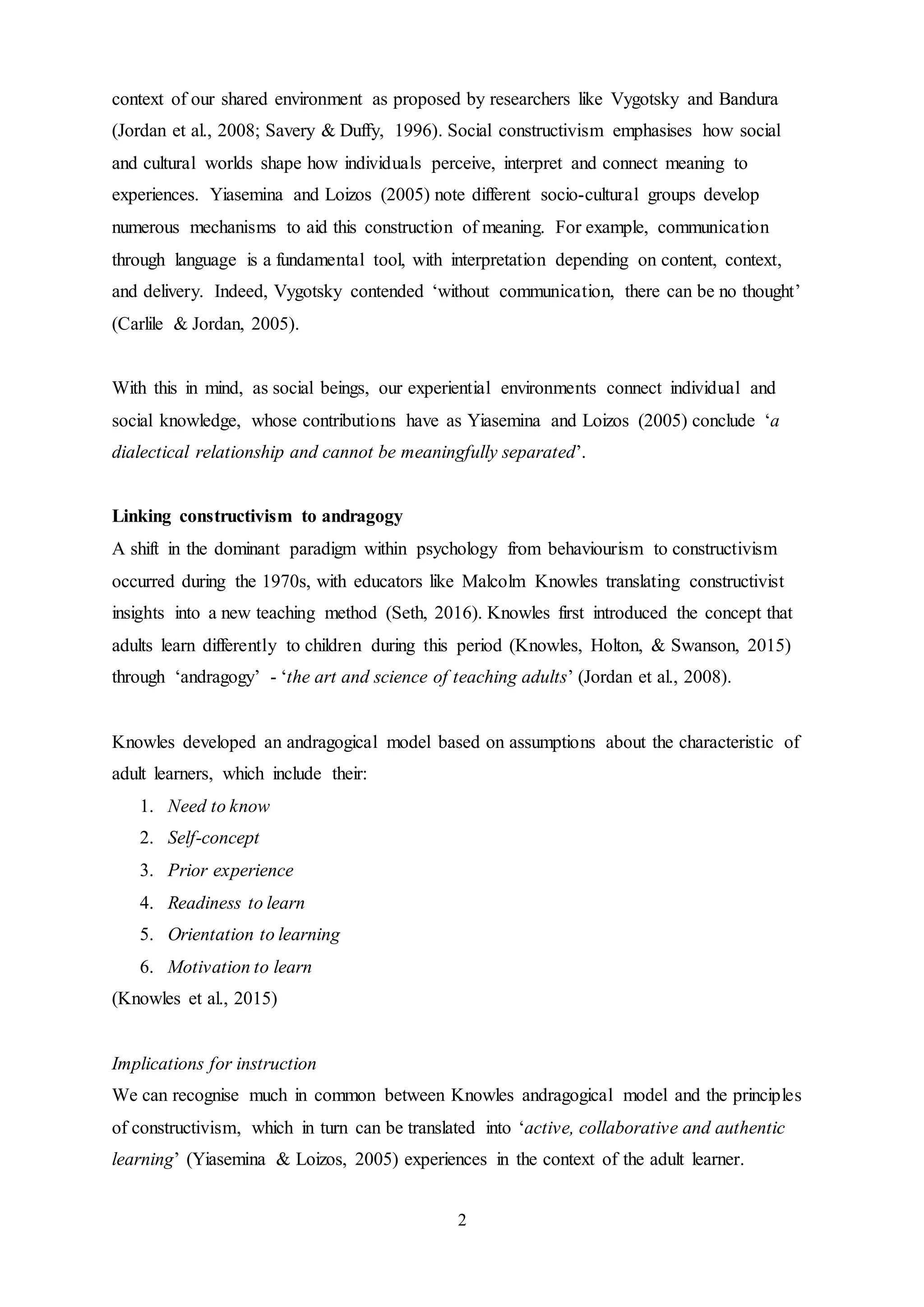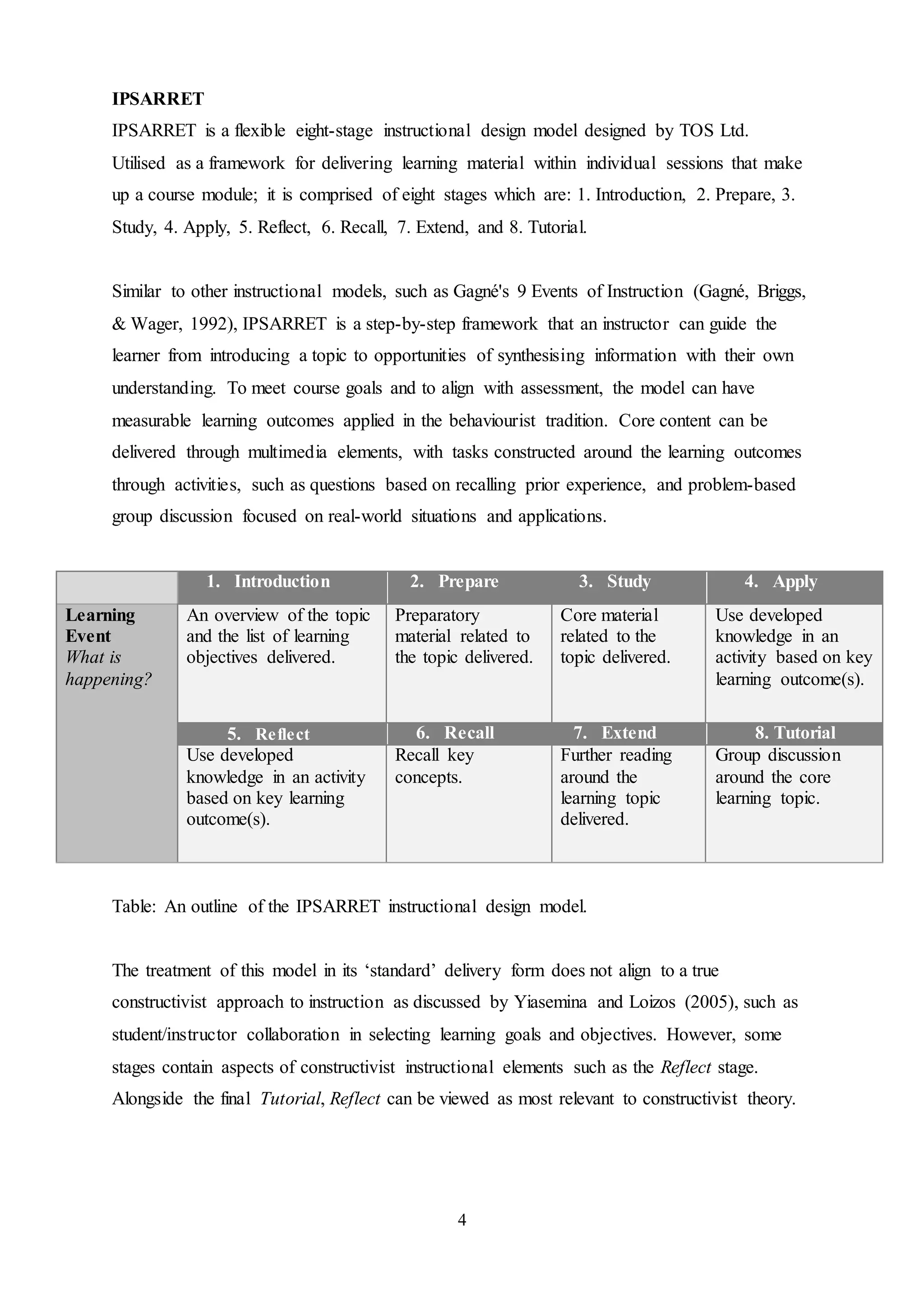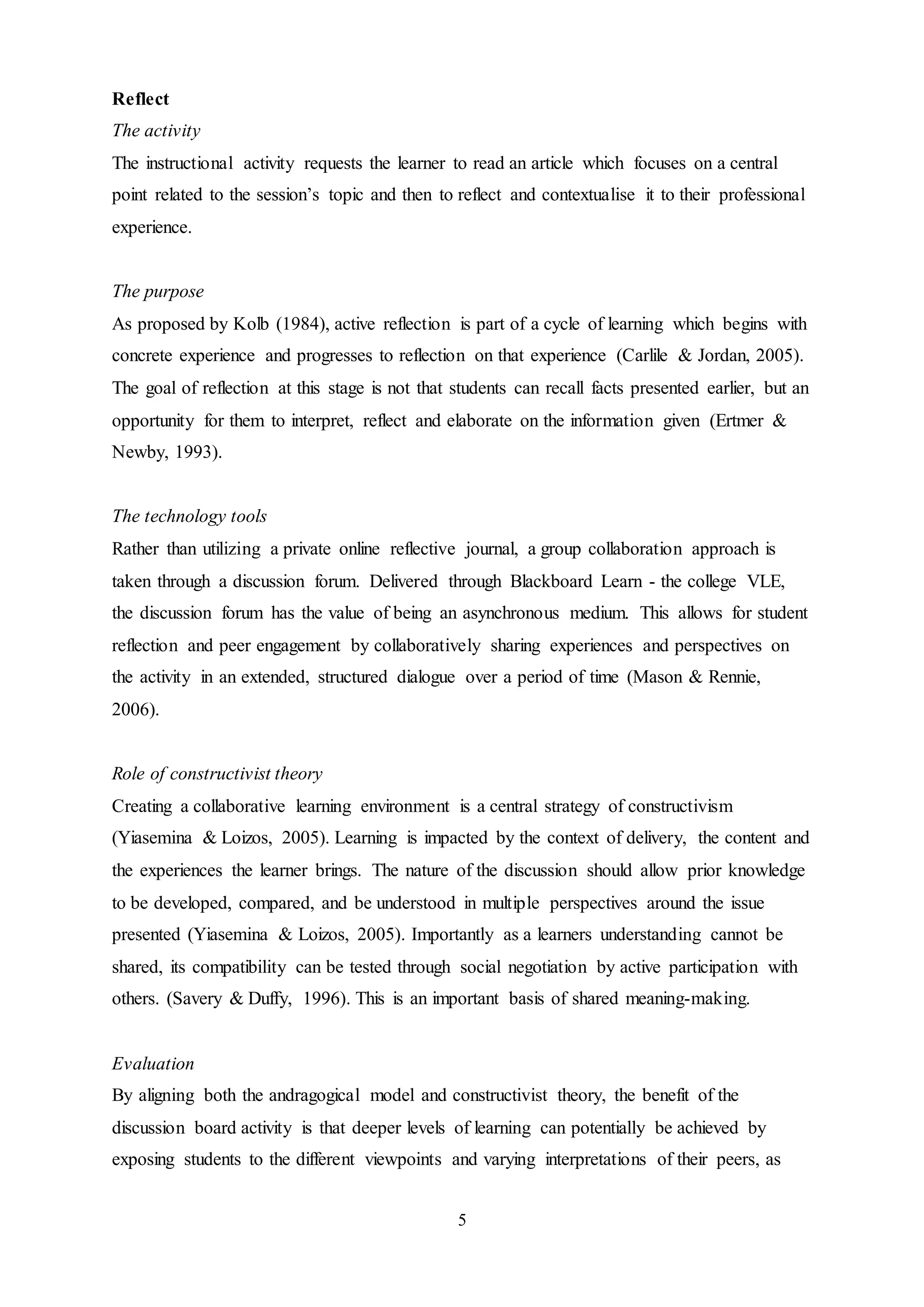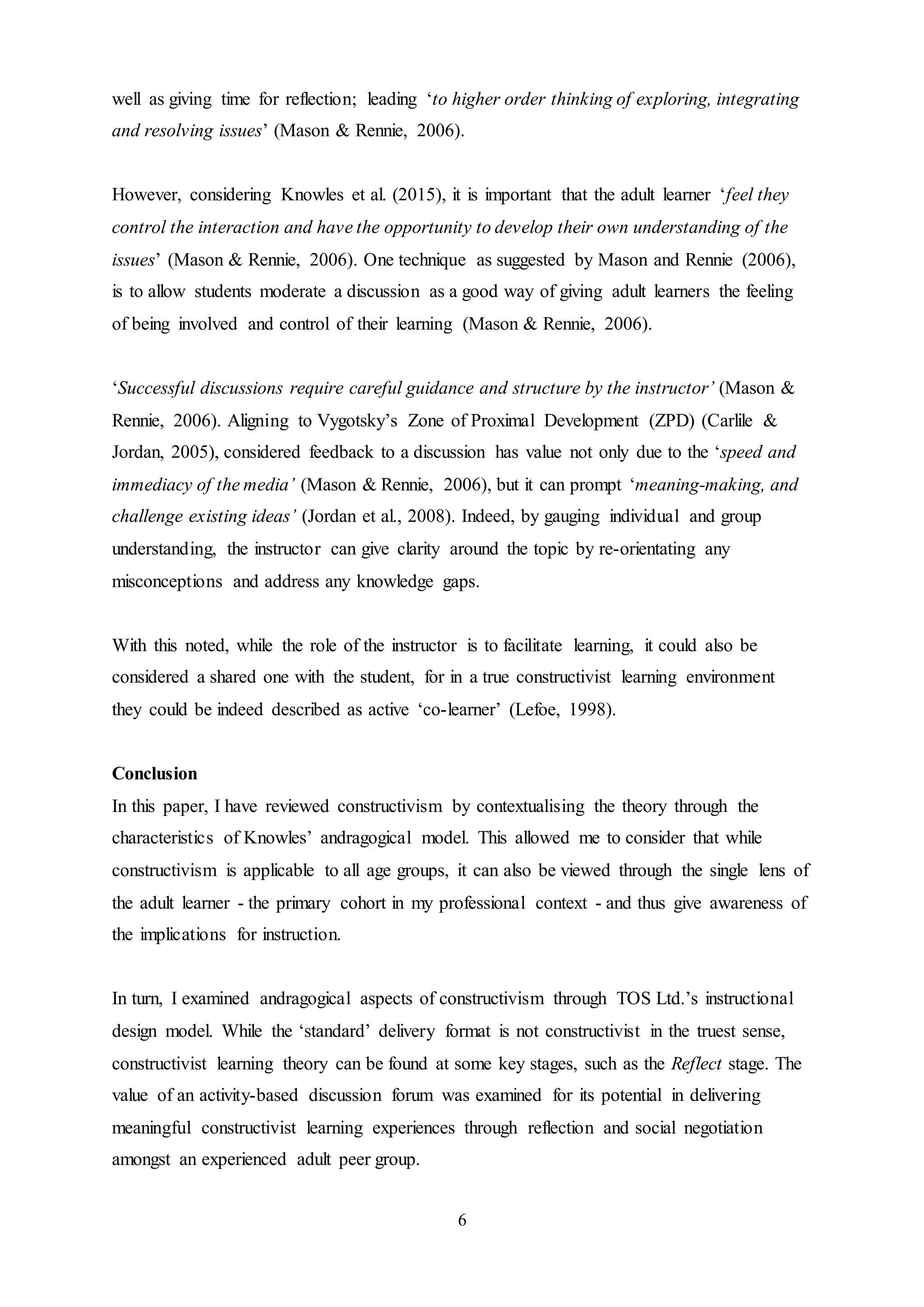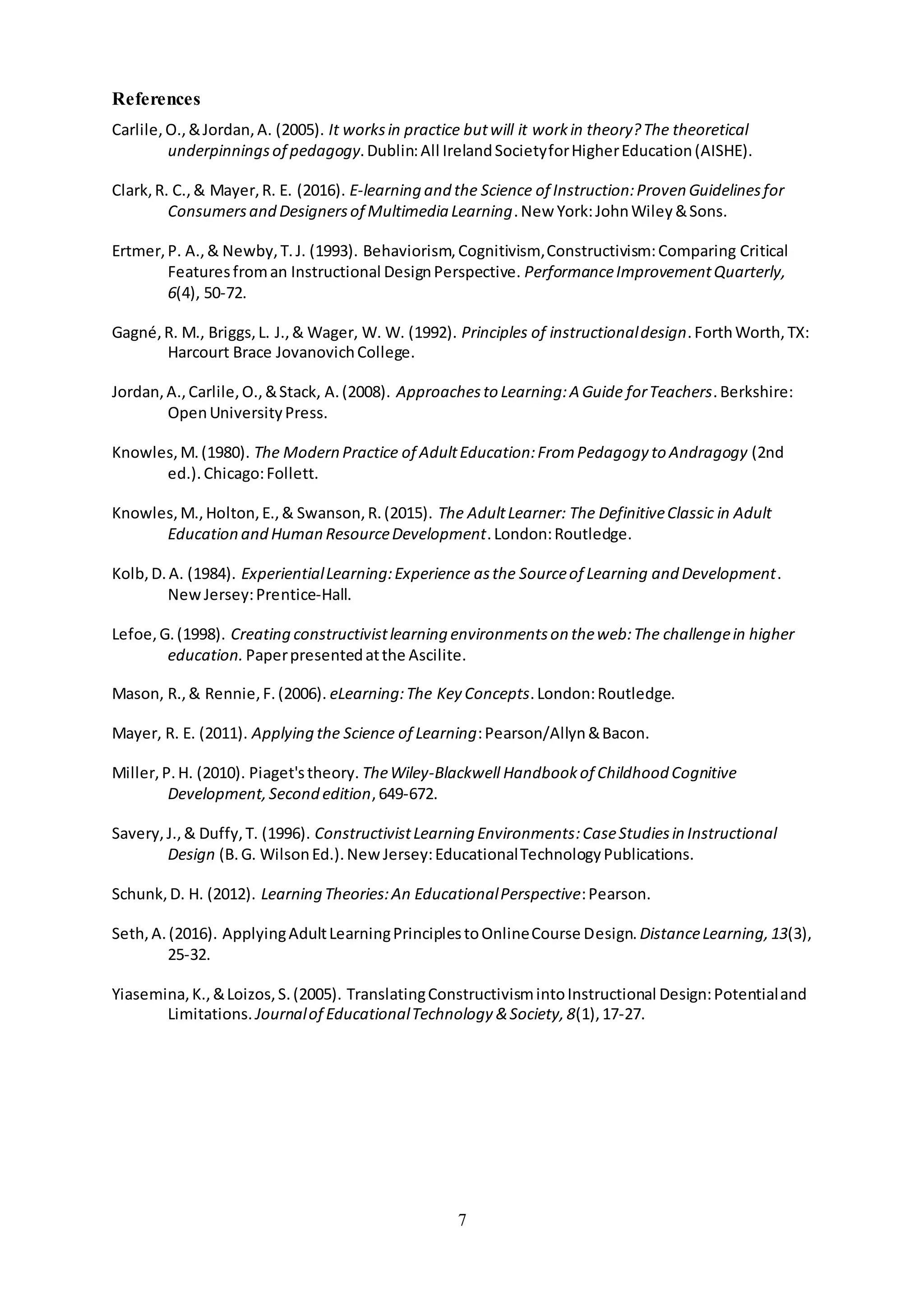1) The document discusses constructivism as a learning theory where learners actively construct their own understanding through experiences rather than knowledge being passively transmitted.
2) It links constructivism to Knowles' theory of andragogy which focuses on adult learners being self-directed with a wealth of prior experiences to draw from.
3) The document evaluates how one stage ("Reflect") of an online instructional design model ("IPSARRET") used by the company could incorporate constructivist learning principles for postgraduate adult learners.
